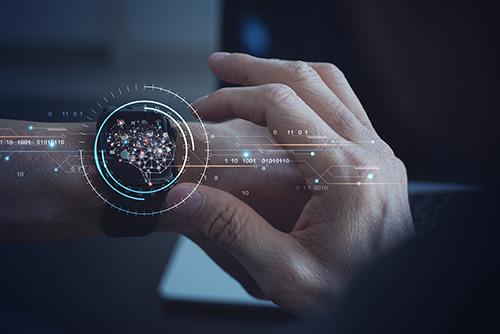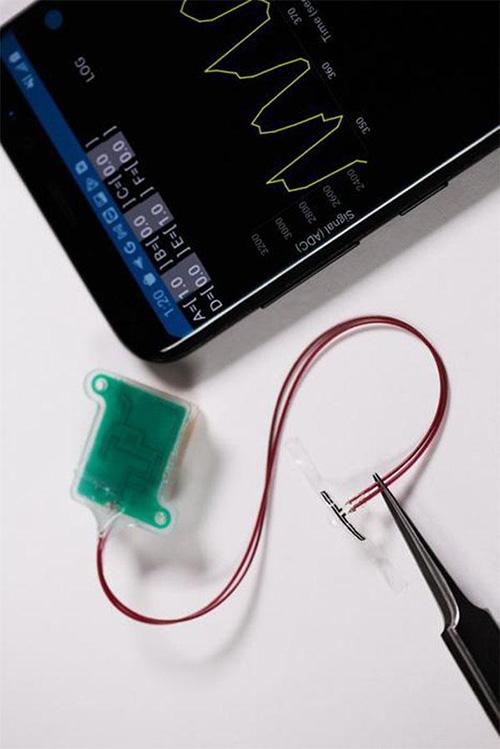- What is digital health?
- What are the benefits of digital health technologies and how are they being used?
- How does NIBIB support research on digital health technologies?
What is digital health?
Digital health refers to the use of information and communication technologies in medicine (including smartphone apps, wearable devices with sensors, and telehealth platforms) to help prevent illness, deliver treatment, and promote wellness. Thanks to advances in computer science, informatics, and medical technologies, digital health has the potential to make health care delivery more efficient and precise. Digital health combines mobile health devices with wireless technology that can communicate health information to personal health records, caregivers, and health care professionals.
What are the benefits of digital health technologies and how are they being used?
Wearable devices often use sensors for monitoring and self-management of chronic health conditions. Wearable sensors have many potential benefits:
- They could help prevent health problems from becoming more serious. For example, smartwatches can track, analyze, and transmit data about heart rate and sleep problems to health care providers, which could prompt them to intervene and potentially prevent stroke or heart attack.

- They could treat patients with diabetes, for example, with automated insulin delivery systems, which use a continuous glucose monitor linked to an insulin pump.
- They are less invasive and more efficient than traditional health care methods. For example, blood sugar levels could be measured without a finger prick and alcohol levels could be measured from the sweat on skin.
Smart phone applications (apps) can enable patient monitoring and be used with telehealth and mobile health. The data collected from these apps enable health care professionals to track patients’ health conditions in real time that could improve patient care, reduce hospital visits, and lower health care costs.
- Wearables paired with telehealth or smart phone applications could significantly improve health outcomes. Physicians could use the data sent from patients’ wearable sensors or smartphone applications to prescribe medications, conduct follow-up appointments, and treat individuals with chronic diseases. For example, a psychiatrist could track a patient’s mood patterns using mobile devices and apps linked to a patient’s phone, helping to customize ongoing mental health care and support.
How does NIBIB support research on digital health technologies?
Wearable lung patch uses deep learning to detect asthma and COPD
Physicians typically use digital stethoscopes (the gold standard) to listen to and record abnormal lung sounds like wheezing and crackles, which are clicking and rattling sounds that can accompany wheezing and may indicate chronic respiratory diseases such as asthma and chronic obstructive pulmonary diseases (COPD). In standard practice, physicians listen to each recording to determine whether the lung sounds are a wheeze, crackle, or normal breath sounds.
But these stethoscopes lack the technology to block out airborne noise and classify lung diseases. Researchers have developed a deep learning model that, when paired with a wearable patch with a microchip sensor, can automatically detect wheezing sounds through tiny vibrations at a high sensitivity with minimal distortion. The deep learning model has the potential to classify respiratory diseases, which could speed up their diagnosis and treatment.
A smart sensor to monitor bladder function

Credit: Northwestern University
Millions of Americans deal with bladder issues, ranging from temporary inconveniences to long-lasting conditions. To monitor bladder function after surgery, doctors often use urodynamic testing, but these tests can be uncomfortable and time-consuming. And they measure bladder function at only a single point in time.
Researchers are developing a new wireless device that could be implanted at the time of surgery to improve bladder monitoring. The device, evaluated in baboons, is equipped with an ultrathin stretchable sensor that can continuously monitor bladder function in real time and send the data to a smartphone or tablet. This technology could potentially alert doctors to abnormal or worsening bladder problems so that treatments can be adjusted.
Smartphone application enables video monitoring of AFib
Atrial fibrillation (AFib) is an irregular heart rhythm that is often very rapid. The condition can lead to blood clots in the heart, and increases the risk of stroke, heart failure and other heart-related complications.
Researchers have designed a smartphone application (app) for patients diagnosed with AFib or who are at risk of developing the condition. The app uses the phone’s video camera to record changes in facial skin color that can indicate a change in their heart rate. The data is sent to clinicians to analyze and detect any irregularities. A small clinical study showed that the app’s heart rate measurements were highly accurate when compared to current methods for heart rate monitoring.
